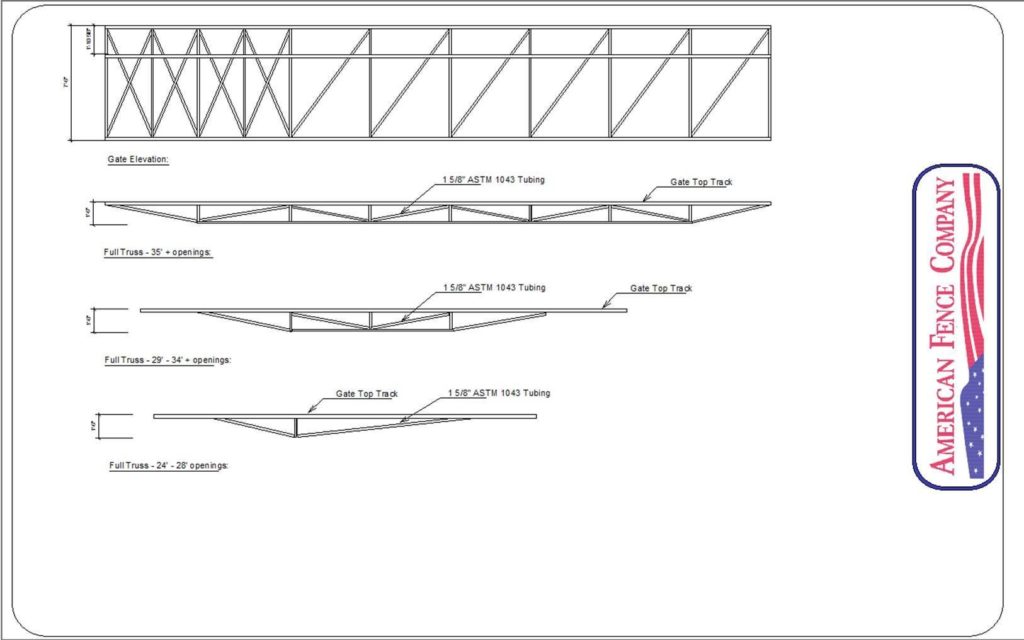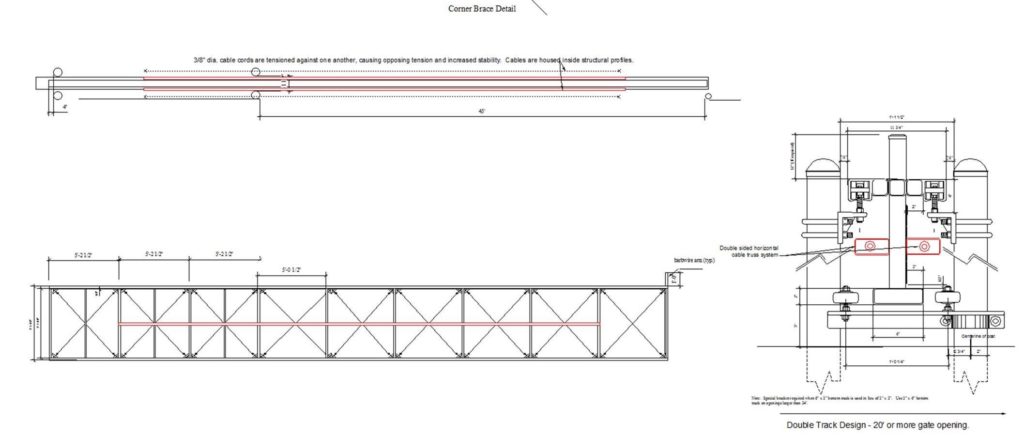Understanding Horizontal Cantilever Gate Trusses
What is a horizontal cantilever gate truss? It is a single plane truss very similar to a building truss. Relative to cantilever gates, it is a rigid frame made from smaller tubing. It may be integrated into the gate frame at time of fabrication or it can be a standalone truss with a complete frame that can be mechanically fastened to the gate in the field.
The illustrations below demonstrate a truss system that is integrated into the gate fabrication. If you review the 35’+ truss, it may be viewed as both a truss integrated into the gate or a standalone.
Why would you use a standalone truss?
- The most practical reason would be for ease of transportation. More than likely, these trusses are used because it was not considered necessary initially at the time of fabrication or the gate was originally manual and ended up becoming automated.
When would you use a horizontal truss?
- A cantilever gate requires a truss when it reaches in excess of 24’ opening and is automated. Please refer to the lengths shown below in the illustrations.
Is a horizontal truss the best solution?
- No. If a gate is to be automated and reaches the lengths below, the best application is a double track aluminum cantilever gate. These gates effectively deal with the wind load with their widened profile and the combination of the double tracks.
What is the biggest concern with a horizontal truss?
- These trusses are not supported by ASTM 2200 as they protrude out too far from the gate frame, posing a hazard to pedestrians. Please note that none of the illustrations below show a blunt end to the truss. All are designed with an eased-sloped end so that it may cause less harm if it comes in contact with others.
Need a better solution for existing gates that won’t provide for a horizontal truss? American Fence Company has your solution. Please refer to the illustration below with the opposing cable truss design. This is a cable truss system that has a very thin profile. A tube is attached to both sides of the gate at the midpoint that horizontally runs the length of the gate. The tube is a carrier for the cable. A cable is installed in each tube with the cable anchored on one end and anchored on the other end with a turnbuckle-style tightener. The cables are tensioned equally, creating an opposing force against one another. As these forces build, the gate will gain rigidity. This is very similar to the concept in post tensioned concrete. This is an exclusive American Fence Company design.


